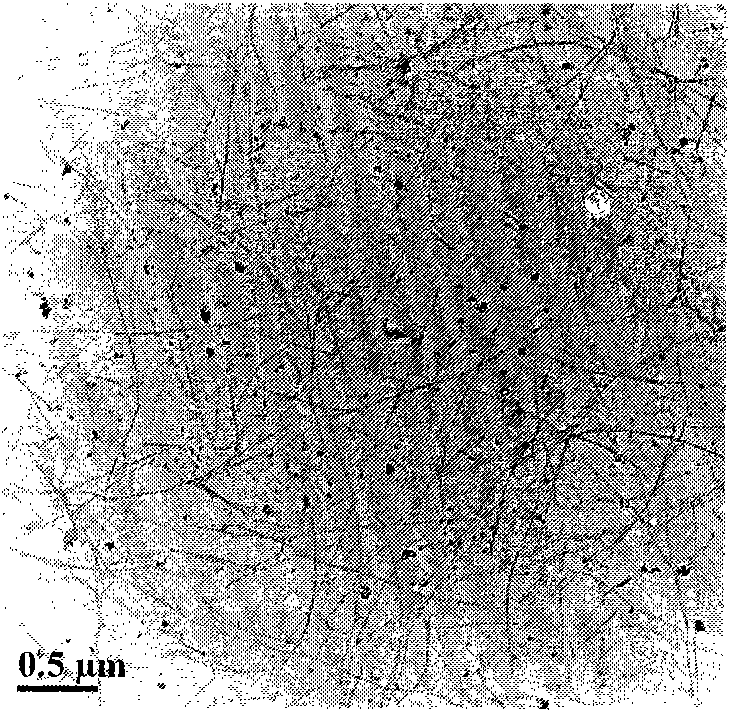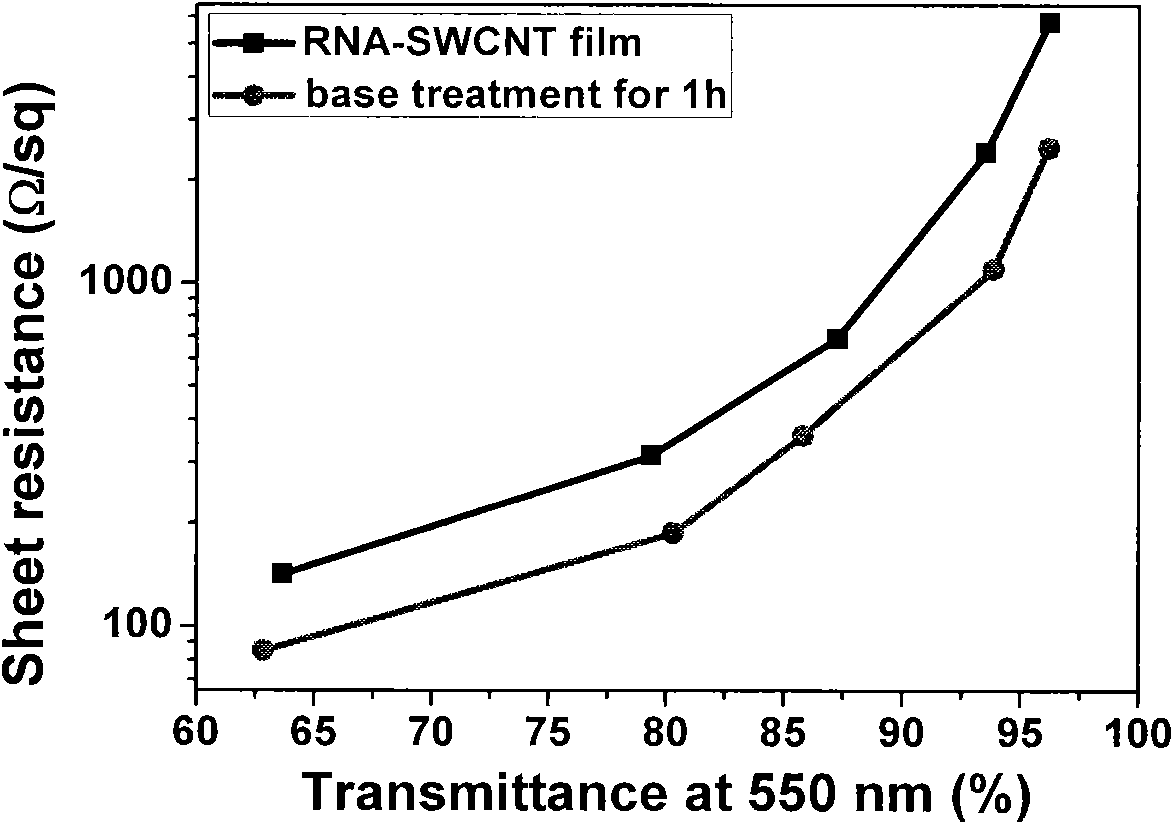Method for preparing carbon nanotube film by removing residual dispersant by alkali treatment
A carbon nanotube film and carbon nanotube technology are applied in the field of carbon nanotube film preparation, and can solve problems such as affecting the flexibility of the film, brittle PET substrates, and decreased film stability.
- Summary
- Abstract
- Description
- Claims
- Application Information
AI Technical Summary
Problems solved by technology
Method used
Image
Examples
Embodiment 1
[0033] Add 5 mg of RNA to 50 mL of deionized water, stir magnetically until the RNA is completely dissolved, then add 10 mg of single-walled carbon nanotubes, and sonicate in a water bath for 2 hours to obtain a black suspension. Centrifuge the suspension at 13000rpm for 30min, take the supernatant, repeat the centrifugation once, take the supernatant and dilute it 20 times, then take 10-60mL dilution respectively, and filter to form a carbon nanotube film. The filter membrane and the membrane formed on the filter membrane were transferred to the substrate together, dried in air at 60° C. for 2 hours, and then soaked in acetone for 30 minutes to remove the filter membrane. The obtained carbon nanotube film was finally dried at 60° C. for 3 hours. The transmittance of the film was measured by ultraviolet-visible spectrometer, and the film resistance was measured by four-probe resistivity meter. Then soak the film in 5% sodium hydroxide solution for 1 hour, wash it with deioniz...
Embodiment 2
[0035] Add 10 mg of DNA to 50 mL of deionized water, stir magnetically until it is completely dissolved, then add 10 mg of single-walled carbon nanotubes, sonicate the probe for 10 min in an ice-water bath, and then sonicate in a water bath for 1.5 h to obtain a black suspension. Centrifuge the obtained black suspension at 13000rpm for 30min, take the supernatant, repeat the centrifugation twice, and finally dilute the supernatant 10 times, take 10-40mL respectively to prepare a transparent conductive film by vacuum filtration, measure its resistance, permeability Rate. Then soak the film in 20% sodium hydroxide solution for 0.5 hours, then wash, dry, and measure its resistance and transmittance. figure 2 The transmission electron micrograph of single-walled carbon nanotubes dispersed as DNA shows that the carbon nanotubes are uniformly dispersed and the size of the tube bundle is small. Figure 4 It was shown that the sheet resistance was greatly reduced after alkali treatm...
PUM
 Login to View More
Login to View More Abstract
Description
Claims
Application Information
 Login to View More
Login to View More - R&D
- Intellectual Property
- Life Sciences
- Materials
- Tech Scout
- Unparalleled Data Quality
- Higher Quality Content
- 60% Fewer Hallucinations
Browse by: Latest US Patents, China's latest patents, Technical Efficacy Thesaurus, Application Domain, Technology Topic, Popular Technical Reports.
© 2025 PatSnap. All rights reserved.Legal|Privacy policy|Modern Slavery Act Transparency Statement|Sitemap|About US| Contact US: help@patsnap.com



